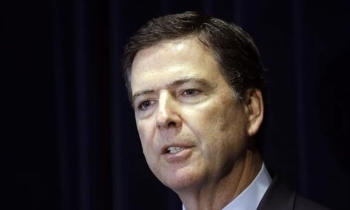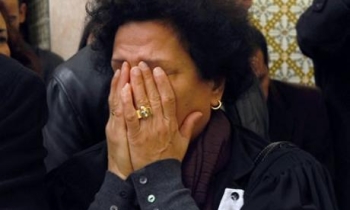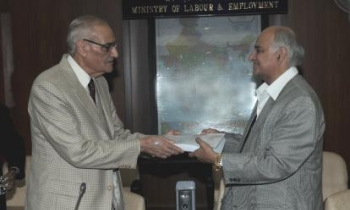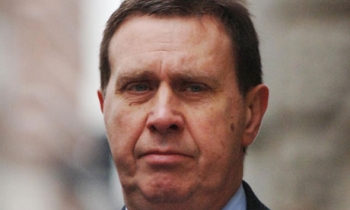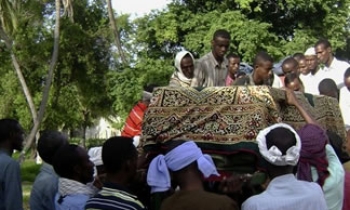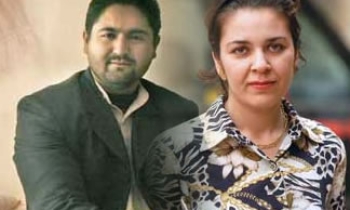There have been 24 serious violations of the freedom to report news and information against Burmese journalists trying to cover protests that began a month ago. The use of violence and censorship against journalists is a “detestable strategy” aimed at preventing them from doing their job, Reporters sans Frontières (RSF) and the Burma Media Association have said.
This strategy has been accompanied by an increase in propaganda in the state and privately-owned media controlled by the military government. Police, soldiers, members of the USDA (a pro-government militia) and government censors have been responsible for these violations, RSF and BMA said, calling on members of the Association of South East Asian Nations (ASEAN) to put pressure on the Burmese government to stop these serious abuses.

Deprived of news from independent outlets, many Burmese listen to the Burmese-language services of international radio stations such as RFA, VOA, BBC and DVB and surreptitiously look at DVB TV’s weekly broadcasts.
The government has, meanwhile, stepped up its propaganda in the media it controls. The protesters are portrayed as agitators bent on fomenting violence who have been mobilised by the opposition National League for Democracy and foreign governments, RSF/BMA said. The pro-government media have also accused the foreign press of creating unrest.
The censorship bureau has systematically rejected articles in which the protests against cost of living increases have been covered in an independent manner. Privately-owned media executives and editors have found themselves being ordered to publish articles favourable to the government and hostile to the internal and external “enemies.”
No foreign journalist has obtained a visa to enter Burma since the start of the protests. The few foreign correspondents based in Rangoon work for the state-owned media of countries that support the military government. The Chinese news agency Xinhua, for example, has in the past month run only three dispatches on the protests, and they just gave the government’s version.
Chronology of incidents:
- September 18: Three Burmese journalists covering a demonstration by monks in Rangoon were arrested and questioned by the police, and their equipment was taken. Two of them worked for Japanese media (Asahi TV and Kyoto News Agency). The third worked for The Voice Journal, a Burmese magazine. Only the Asahi TV reporter got his camera back, but without the memory card. Hla Htwe Aung told the Mizzima news agency it was hard to recover confiscated equipment as the police, soldiers and USDA militiamen were all in civilian dress.
- September 14: The front-page story in all the government newspapers was the military government’s generals taking offerings to several monasteries.
- September 12: The last telephone line at the Rangoon headquarters of Aung San Suu Kyi’s party, the National League for Democracy, was cut. The party’s leaders had often taken calls from the foreign press on the line.
- September 11: The service on the mobile phones of Agence France-Presse correspondent Hla Hla Htay and freelance journalist May Thingyan was cut. A few days later, the AFP management asked the authorities to restore the service. 10 September: The telephones of 50 government opponents were disconnected to prevent them from talking to Burmese and foreign journalists. 9 September: Members of the Directorate of Military Engineers moved into the governmental Office of Telecommunications on Bo Soon Pat Street in Rangoon. They put taps on the phone of around 50 prominent people, including opposition members Su Su Nway, Phyu Phyu Thinn, Htay Kywe, Hla Myo Naung and U Myint Thein.
- September 9: Privately-owned newspapers were forced to publish an official statement accusing Min Ko Naing and other Generation 88 activists of inciting a revolt.
- September 4: Love Journal (a privately-owned magazine run by Myat Khaing, who is known to have good relations with the information minister) published a long article headlined, “People who make mountains out of molehills using the petrol price rise.” Attacking the journalists covering the protests, it said: “Foreign news agency reporters are conspiring with the demonstrators to create instability in Burma.”
- September 3: Access to the video-sharing website YouTube was blocked. The country’s leading Internet Service Provider, which is controlled by the ministry of posts and telecommunications, gave no explanation for the ban. Another Burmese ISP, Bagan net, had already made YouTube inaccessible. The few videos of the protests to have emerged were shot by “citizen-journalists” who used video-sharing sites like YouTube to distribute them.
- August 28: A pro-NLD photojournalist, Win Saing, was arrested while trying to photograph NLD members making offerings to monks in Rangoon. He is reportedly still being held in Kyaik-ka-san detention centre.
- August 27: The press registration and surveillance department ordered news editors to restrict the publication of reports about consumer price hikes.
- August 27: The information minister, Gen. Kyaw San, told government media editors to be very careful about the kind of reports they disseminate.
- August 23: USDA members and police prevented journalists from getting near to a group of Rangoon street demonstrators. USDA thugs jostled and insulted journalists. A Reuters reporter was ordered not to take photos of arrests. Cameras were confiscated by police.
- August 22: Men in plain clothes manhandled an unidentified journalist as he was taking photos of public transport users waiting in line.
- August 20: The Rangoon military command banned journalists from taking photos of demonstrations and ordered that the cameras of those who disobeyed should be seized and destroyed.
- August 19: As soon as the first protests began, the Burmese correspondents of foreign news media reported being subjected to intimidation from plain-clothes police and USDA members. Circulating in army trucks and armed with spades and iron bars, they insulted and threatened journalists.

